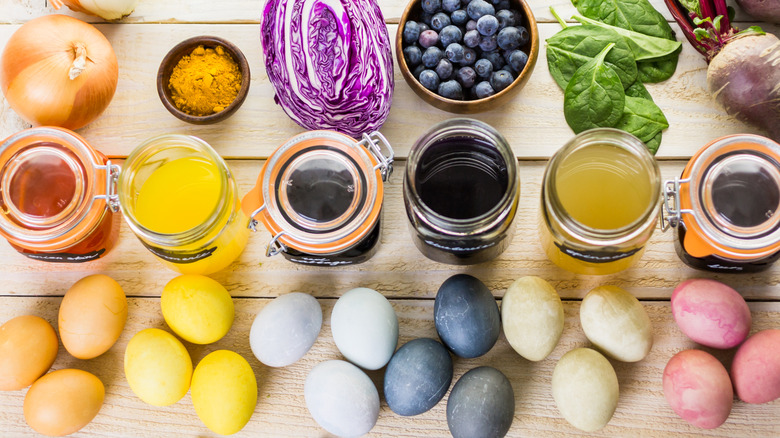The Veggie You Need To Make Vivid Frosting Without Food Dye
We may receive a commission on purchases made from links.
Food dyes have often be relied on for creating vibrant colors for both homemade and packaged baked goods, as well as candy. However, the FDA's latest food dye ban stated that synthetic petroleum-based food dyes will be phased out in the U.S. due to studies showing their detrimental health effects. One of the more problematic dyes is Red 40, which is used to create red or pink-colored treats. It has been shown to be hazardous to brain development in children and may exacerbate behavioral issues among children with ADHD. For a natural red food coloring alternative, head to the produce section of your grocery store and grab a large beet. The juice from a raw beet can lend pink to magenta shades in baked goods (depending on the amount used), without imparting any beet flavor, either.
Before creating this vibrant food coloring, consider wearing plastic gloves to prevent the juice from staining your hands. Begin by washing and thoroughly scrubbing the beet, or peeling its skin. Next, line a large bowl with a paper towel and grate the beet using the finest side of a box grater. Once the beet is completely grated, gather the shreds with the paper towel and wring out the juice. One beet should yield approximately 2 to 3 tablespoons of juice. This amount of juice creates the perfect pink color when combined with homemade white frosting, or one container of the best store-bought frosting.
Nature's color palette
Not only can the juice of a beet be used for vivid color, but you can color a no-dye red velvet cake with beet purée to get an identical shade to artificial dye. The beet also creates an amazingly moist texture — all without any beet flavor!
Aside from beets, other various plant sources can effortlessly create a vibrant array of natural food colors. For red, use tomato juice. Carrot juice, yellow onion skins, or paprika will produce orange. Turmeric, dried mango, or dried pineapple powder are great for yellow shades. Green can be created using spinach juice, or culinary-grade matcha green tea powder. You can craft a vivid sapphire hue by using blue spirulina algae, which comes in a powder like Micro Ingredients Blue Spirulina Powder. Cabbage juice mixed with baking soda can also create a lighter blue. For purple, blueberry or blackberry juice work well. Lastly, for brown or black — colors that aren't always easy to achieve with food dyes — use brewed black coffee, steeped black tea, or cocoa powder for brown, and activated charcoal for black.
Who needs artificial food dyes when nature has clearly provided us with a vivid color palette to work with? Whether you're baking for a birthday party, holiday gathering, or just a colorful afternoon snack, these natural alternatives offer a fun, wholesome touch for the treats we love.

